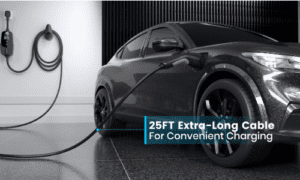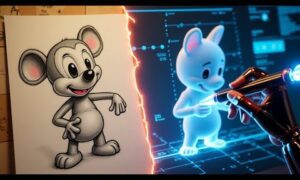Visual content plays a pivotal role in marketing technical products. Whether you’re a startup or an established company, showcasing your product effectively can make a significant difference. However, marketing technical products can be tricky. Unlike lifestyle or fashion items, technical products often require detailed explanations and clear visuals to capture attention. Fortunately, using creative and strategic visual content can simplify this challenge.
Why Visual Content Matters for Technical Products
Before diving into specific ideas, it’s important to understand why visual content is crucial for technical products. First, visuals help break down complex concepts. A well-designed image or video can explain a product’s features much faster than text alone. Second, visual content increases engagement. People tend to spend more time on pages with appealing graphics, which can reduce bounce rates and improve SEO rankings. Finally, visuals support brand credibility. High-quality images and videos communicate professionalism and trustworthiness.
With these benefits in mind, you can see why investing in compelling visual content is a smart move for any technical product marketer.
Product Demonstration Videos
One of the most effective ways to showcase technical products is through product demonstration videos. These videos provide a step-by-step walkthrough of the product’s features, usage, and benefits. For example, a software company can create screen recordings that highlight key functionalities. Meanwhile, hardware manufacturers might show the product in action, focusing on its build and performance.
Moreover, videos tend to rank well on search engines and social platforms, increasing your reach. Keep your demonstration clear, concise, and visually appealing. Add subtitles or voiceovers to ensure accessibility for all viewers.
Infographics Simplifying Complex Information
Technical products often come with intricate specifications and data. Infographics are an excellent way to present this information visually. By combining icons, charts, and concise text, infographics make it easier for users to understand the product’s advantages.
For instance, if your product involves data analytics, an infographic can illustrate how data flows through the system or compare your product’s performance with competitors. Infographics also encourage sharing on social media, thereby increasing your product’s visibility.
Interactive 3D Models and Animations
To stand out in a competitive market, consider using interactive 3D models or animations. These allow users to explore the product virtually from different angles, making the experience engaging and informative.
This approach is especially useful for complex machinery, electronics, or architectural technology. Users can zoom in, rotate, and sometimes even customize the product in real-time. Adding interactive elements keeps users engaged longer and increases the likelihood of conversion.
Behind-the-Scenes Visuals: Building Trust and Transparency
Customers appreciate transparency, especially when investing in technical products. Sharing behind-the-scenes images or videos of your manufacturing process or development stages can build trust.
For example, photos of your engineering team at work or the quality control process demonstrate your commitment to excellence. Such content humanizes your brand and fosters a stronger connection with your audience.
User-Generated Content Featuring Your Product
User-generated content (UGC) is another powerful visual tool. Encourage your customers to share photos or videos of them using your technical product. UGC serves as authentic social proof, boosting credibility and trust. You can promote UGC through contests or hashtag campaigns. Sharing these visuals on your website or social media channels enhances community engagement and shows potential buyers real-world applications of your product.
Comparison Charts and Visual Case Studies
People love to compare products before making a purchase. Creating visual comparison charts that highlight your product’s advantages over competitors can be very persuasive. Use clear icons, checkmarks, or color coding to make the differences easy to spot.
Additionally, visual case studies combining images, graphs, and success stories provide concrete proof of your product’s effectiveness. Highlight key metrics, client testimonials, and before-and-after visuals to tell a compelling story.
Explainer Animations and Whiteboard Videos
Explainer animations and whiteboard videos are excellent for breaking down complex technical concepts in an engaging way. These formats simplify difficult ideas using storytelling, drawings, and motion graphics. They work well for software products, technical services, or innovations that require a foundational understanding. Keep these videos short and focused, using a friendly tone to maintain viewer interest.
Step-by-Step Visual Guides and Tutorials
Providing visual guides or tutorials can greatly improve user experience. Step-by-step images or short clips show customers exactly how to install, operate, or troubleshoot your product. For example, an electronics manufacturer can create detailed setup guides using annotated images. These guides reduce customer support requests and help users get the most out of your product.
High-Quality Product Photography for Online Catalogs
Never underestimate the power of professional product photography. Crisp, high-resolution images showcasing your product from multiple angles help customers make informed decisions. Use consistent lighting and backgrounds to maintain a polished look across your catalog. Consider lifestyle photos showing the product in real-world settings to help customers visualize its use.
Visual Testimonials and Reviews
Finally, incorporating visual testimonials can add a personal touch to your marketing efforts. Videos or photos of satisfied customers sharing their experiences add authenticity.
Pair these testimonials with key product visuals or relevant use cases for maximum impact. Visual testimonials often resonate better than plain text, encouraging potential customers to trust your brand.
Tips for Creating Effective Visual Content for Technical Products
Creating visual content is just the first step. To maximize its effectiveness, consider the following tips:
- Keep it Simple: Avoid clutter. Make your visuals easy to understand at a glance.
- Use Consistent Branding: Colors, fonts, and styles should align with your brand identity.
- Optimize for SEO: Use descriptive filenames, alt texts, and captions to boost search visibility.
- Make it Mobile-Friendly: Ensure your visuals look great on all devices.
- Incorporate Calls to Action: Guide viewers on what to do next after engaging with your content.
Conclusion
Visual content is essential in conveying the value of technical products effectively. By combining videos, infographics, interactive elements, and authentic visuals, you can create a compelling story around your product. Remember, technical does not mean boring. With the right approach, you can make your product understandable, attractive, and trustworthy. Start experimenting with these visual content ideas today. Not only will they help clarify your product’s features, but they will also engage and convert your audience, ultimately driving growth for your business.































